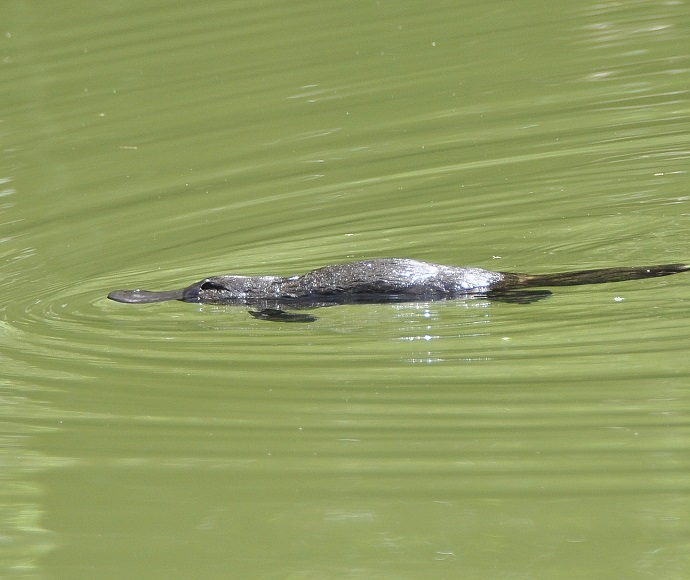Mammals that live in wetlands
There are at least 9 species of mammal that rely wholly or partly on wetlands in New South Wales. They include the following native mammals:
- The swamp rat is found on the NSW coast and lives in heathlands, densely vegetated swamps in forests and in thick vegetation along rivers and streams.
- The common water rat is one of Australia's largest rodents and is usually found near permanent bodies of water. It lives in burrows in river and lake banks.
- The platypus lives in burrows in the banks of rivers, streams, creeks and ponds, ideally ones that are shaded by native vegetation.
- The fishing bat (southern myotis) lives in tree hollows, caves, mines, culverts and under bridges, often close to water. It is also known as the southern myotis or large-footed myotis.
Other mammals that live around wetlands include the yellow-footed antechinus, common planigale, common blossom-bat, eastern chestnut mouse and pale field rat.
Why do mammals need wetlands?
Mammals live in wetlands because they are adapted to the wet conditions and there is a plentiful supply of their preferred foods. For example:
- The swamp rat feeds on grasses, sedges, reeds, seeds and insects.
- The water rat feeds on a wide range of prey including large insects, crustaceans, mussels and fishes, and even frogs, lizards, small mammals and water birds.
- The platypus mainly feeds during the night on a wide variety of aquatic invertebrates, free-swimming organisms such as shrimps, swimming beetles, water bugs and tadpoles, and at times worms, freshwater pea mussels and snails.
- The fishing bat feeds on aquatic insects, small fish and flies close to the surface of rainforest streams or large lakes and reservoirs.
Threats to mammals in wetlands
Mammals that rely on wetlands face a variety of different threats. For example:
- The main threats swamp rats face are from land clearing, swamp reclamation and being preyed on by cats.
- Water rats face threats from habitat alteration caused by flood mitigation and swamp drainage, and from being preyed upon by cats and foxes.
- Platypuses rely on water that is relatively free of pollutants.
- Fishing bats face threats from the destruction of caves by mining, disturbance by human visitors, tree clearing, changes to their feeding areas caused by forestry, agriculture and pollution.
